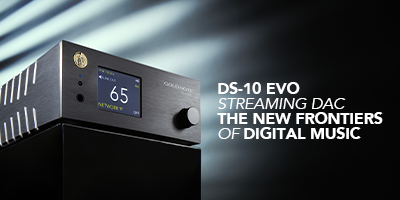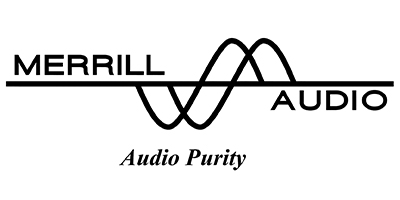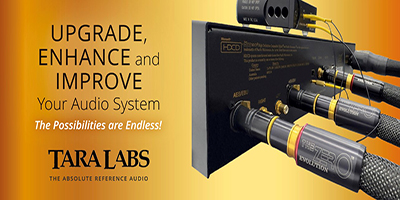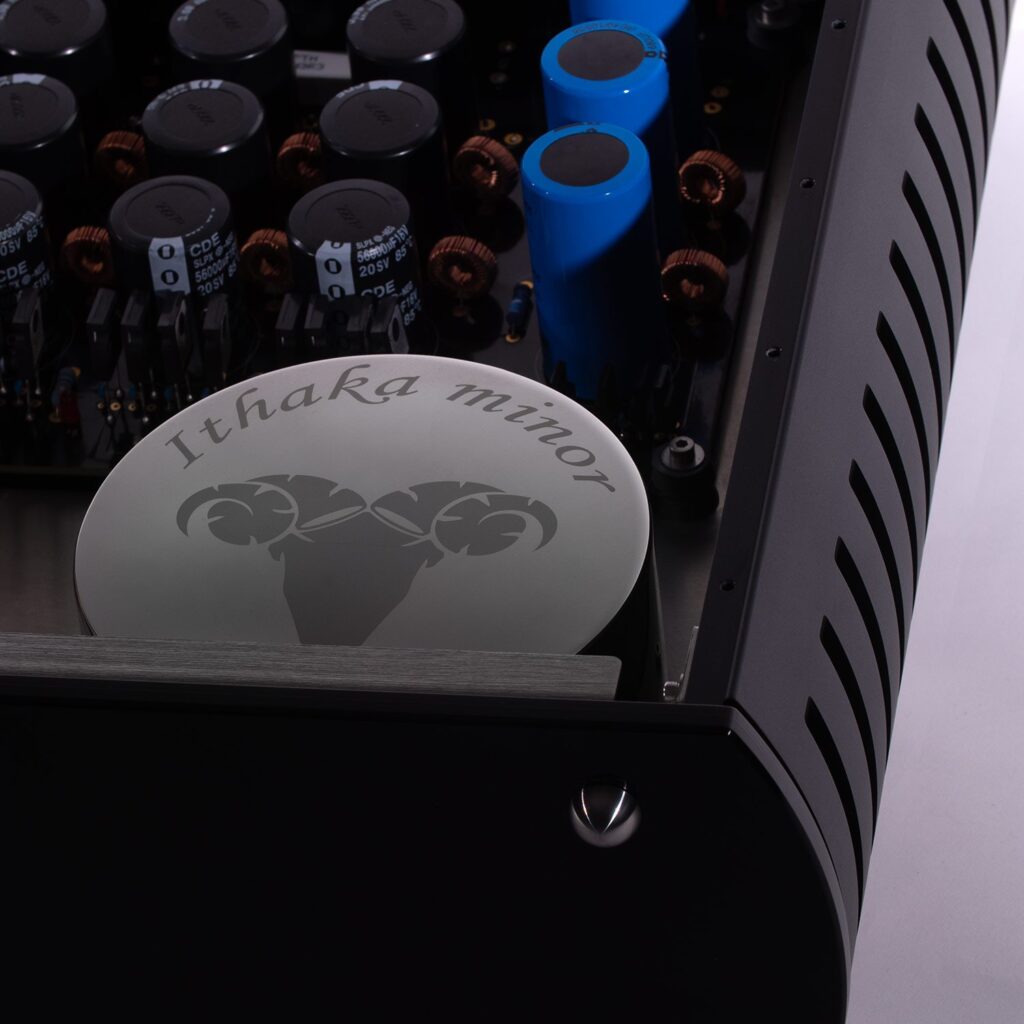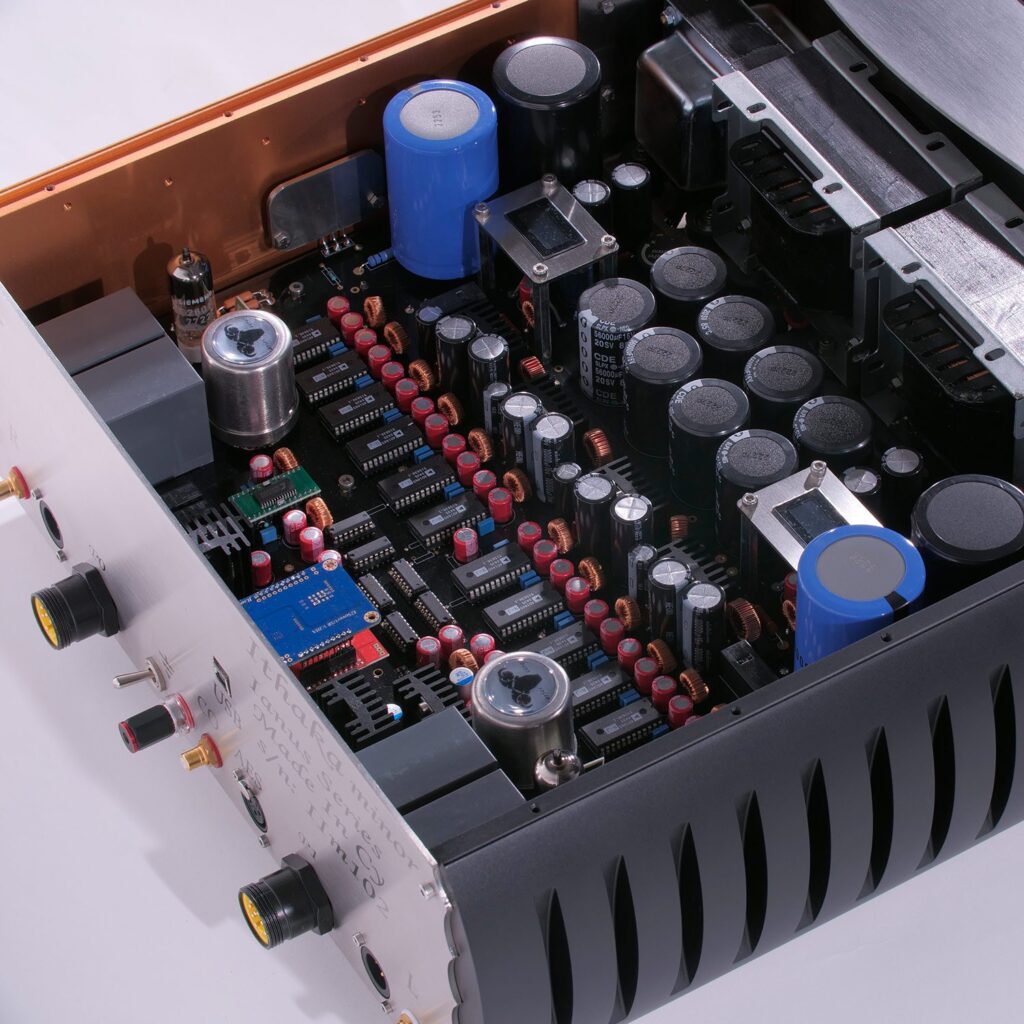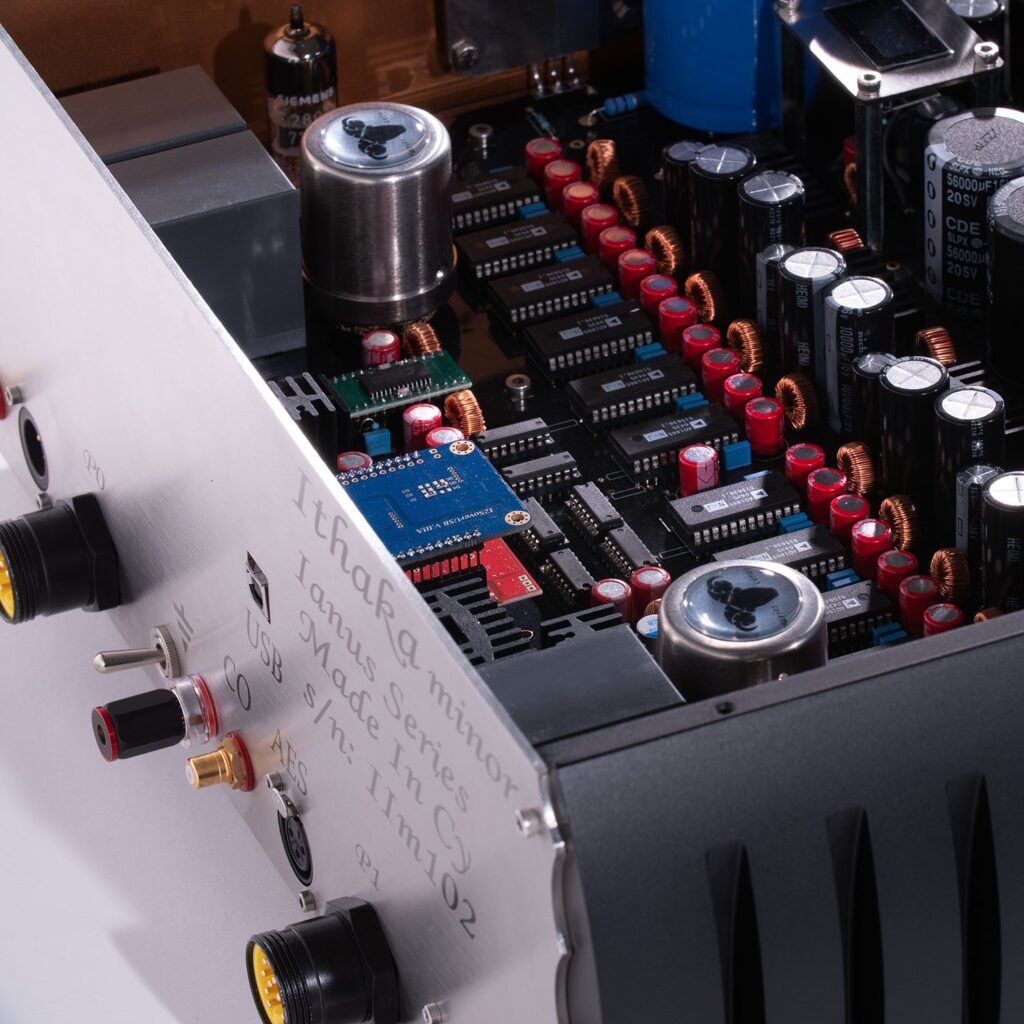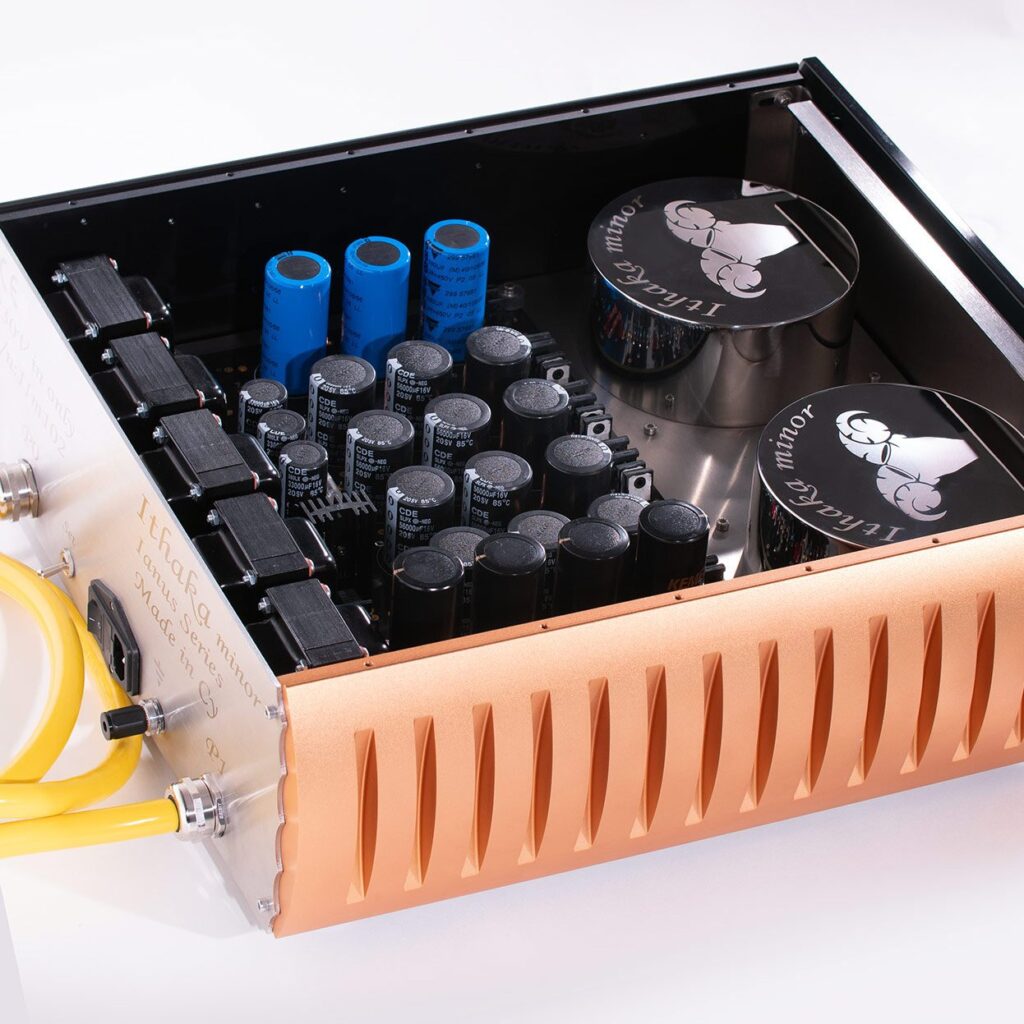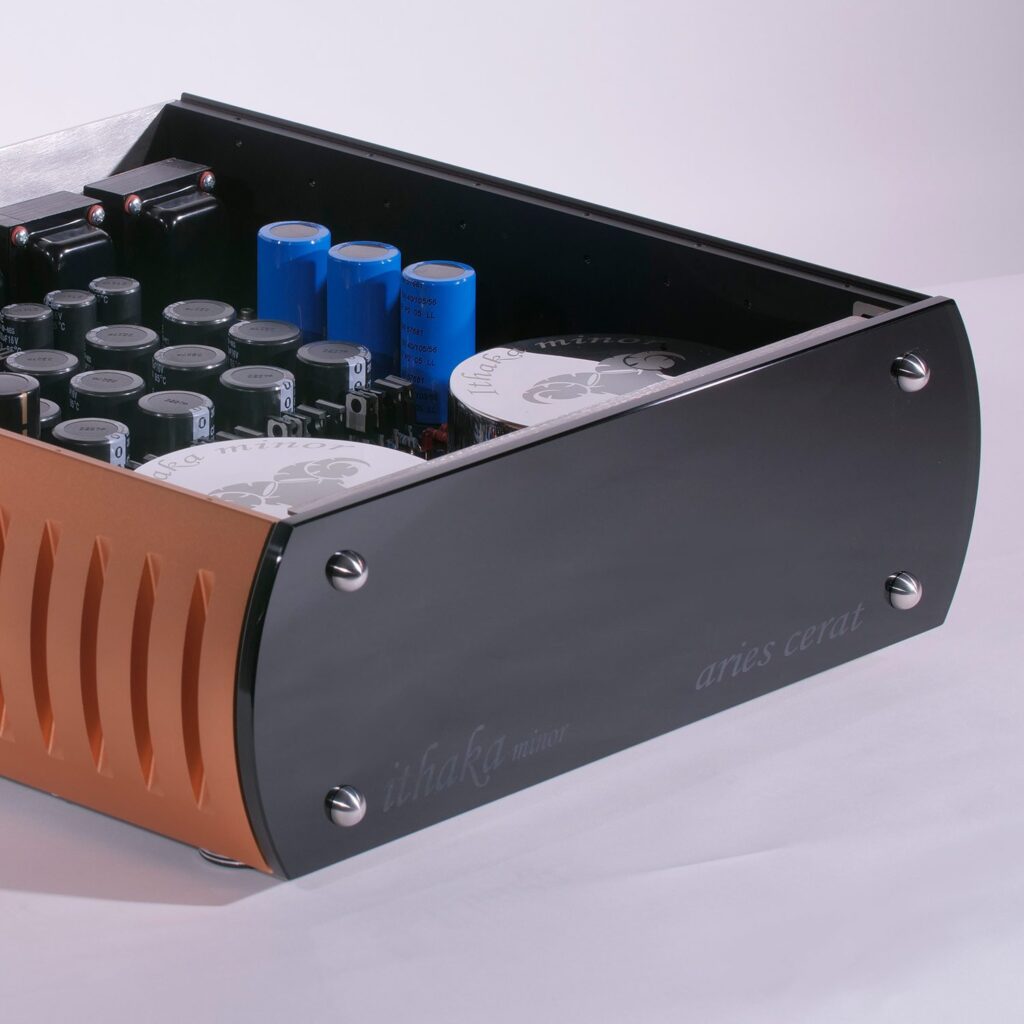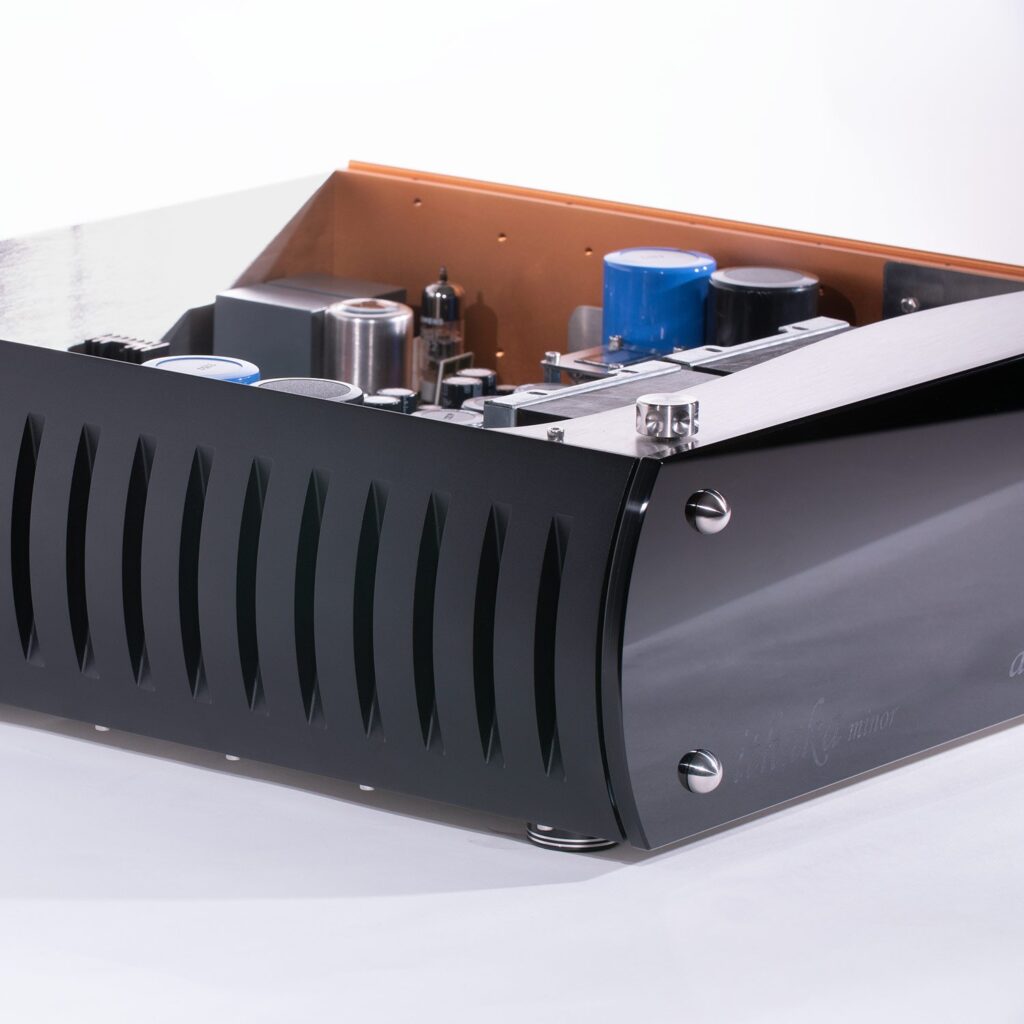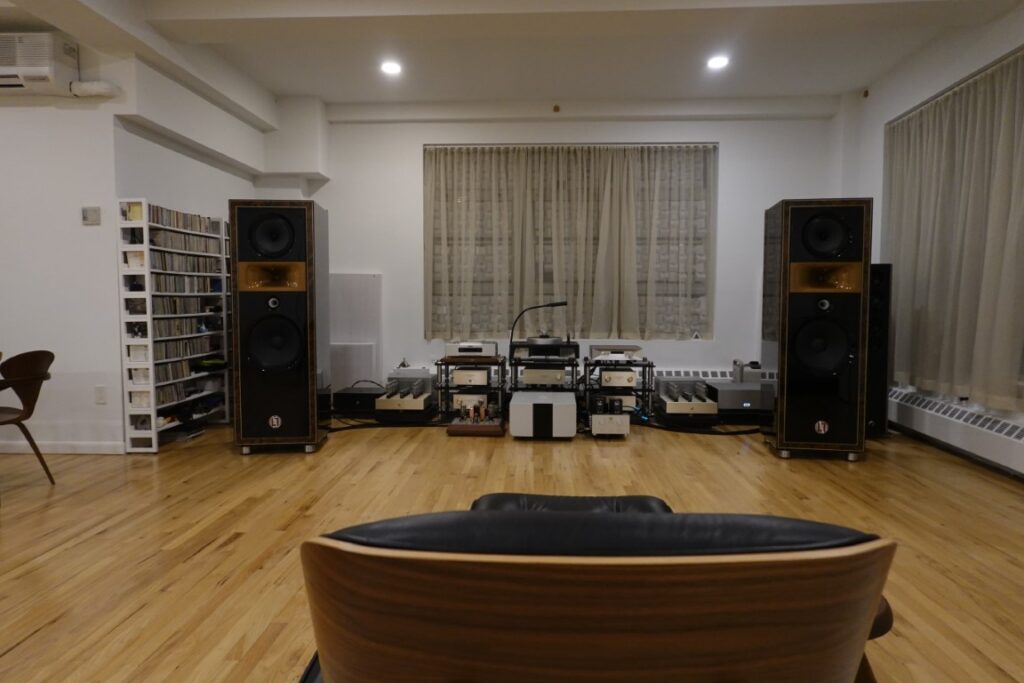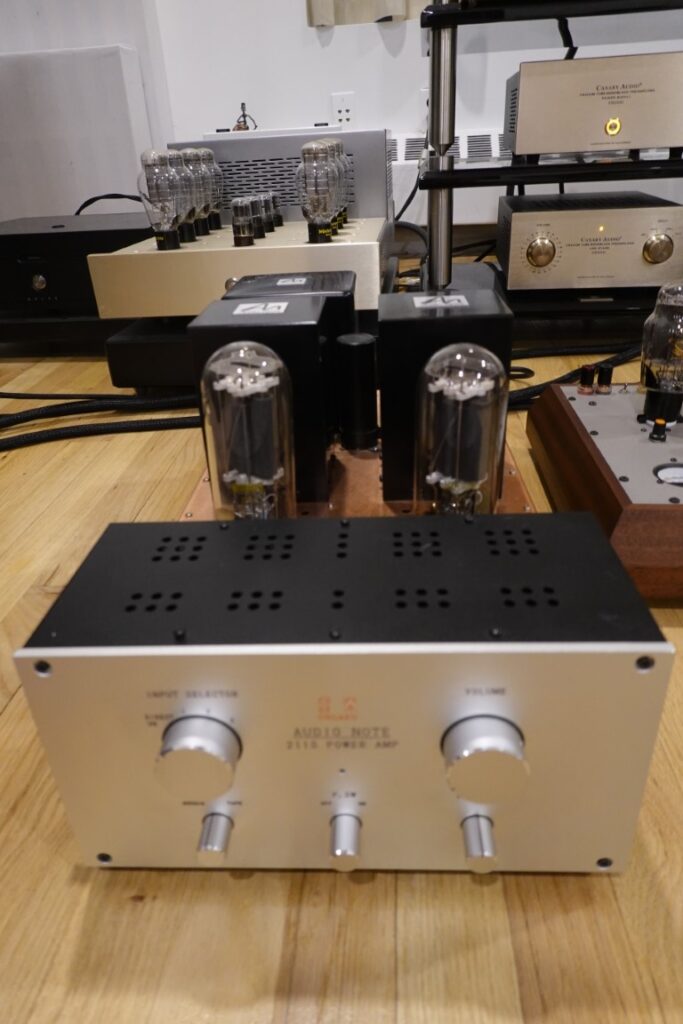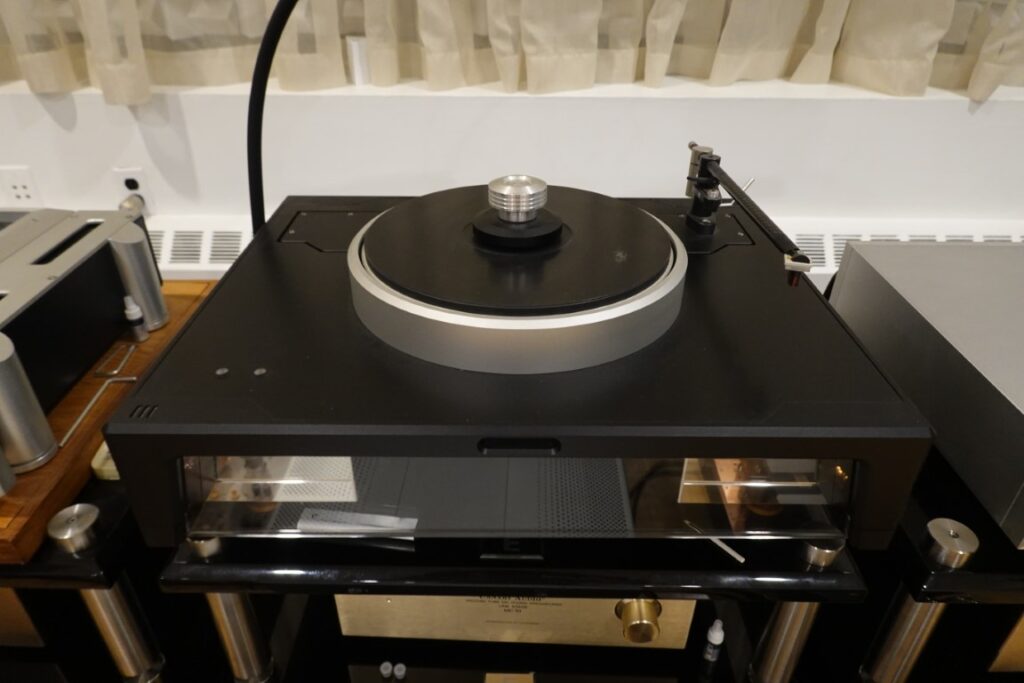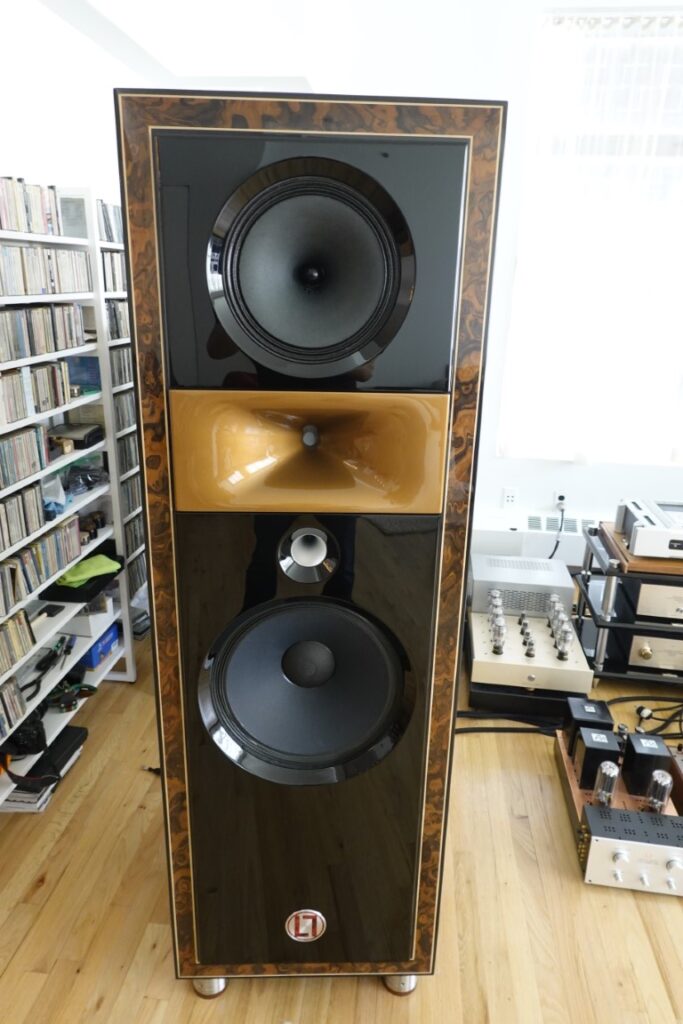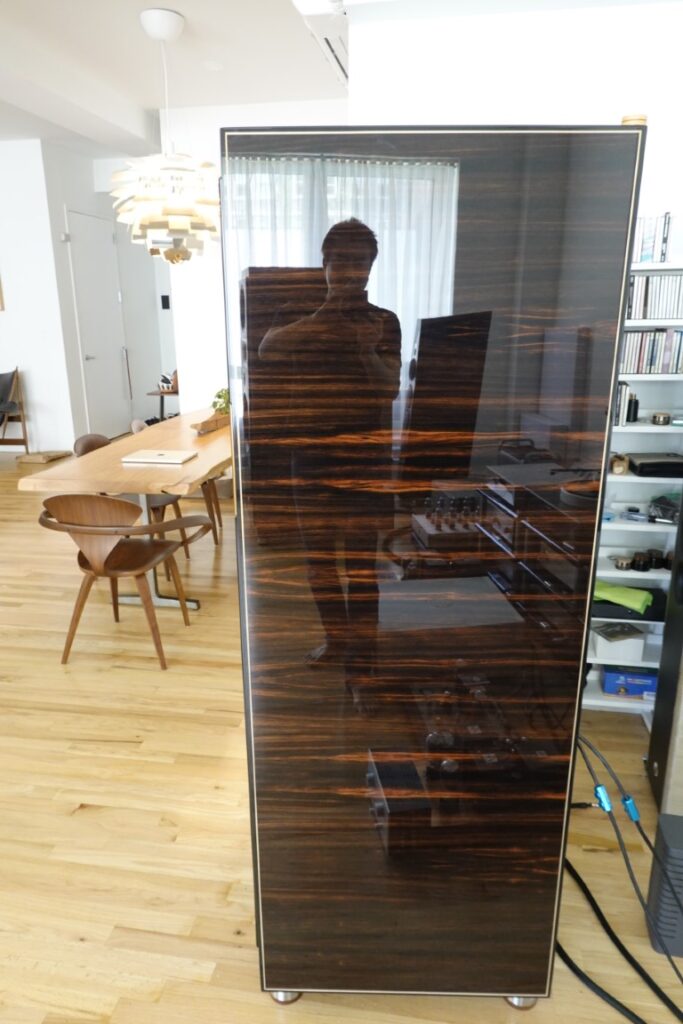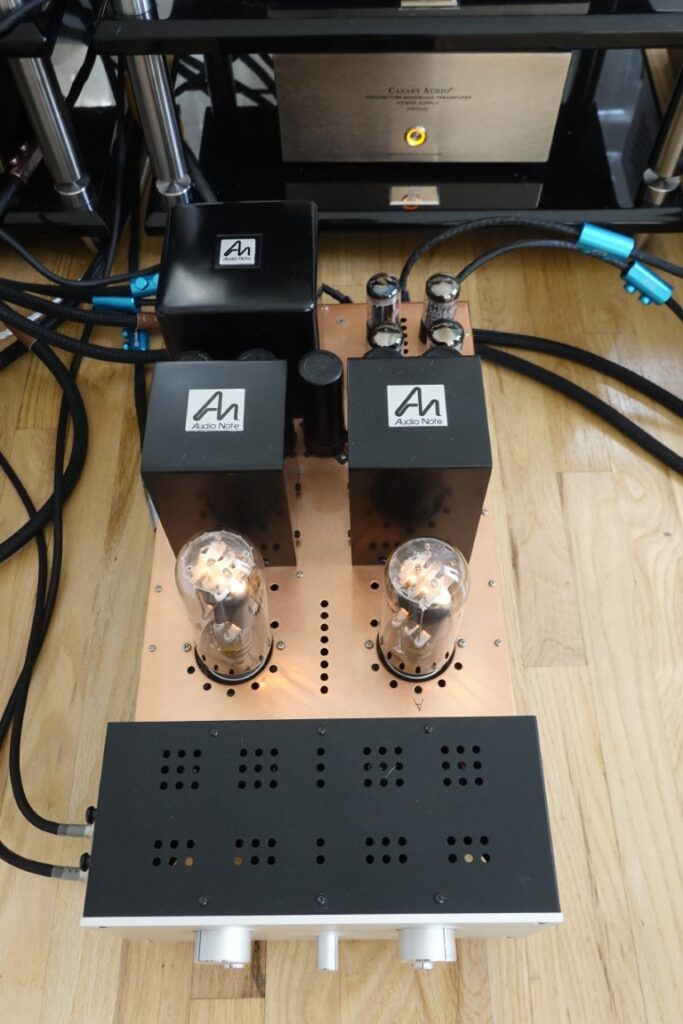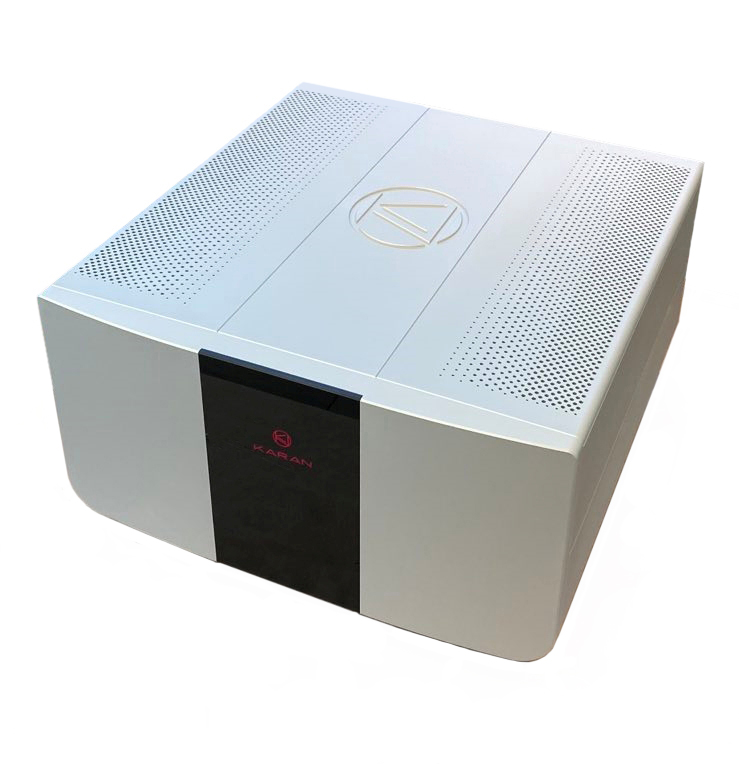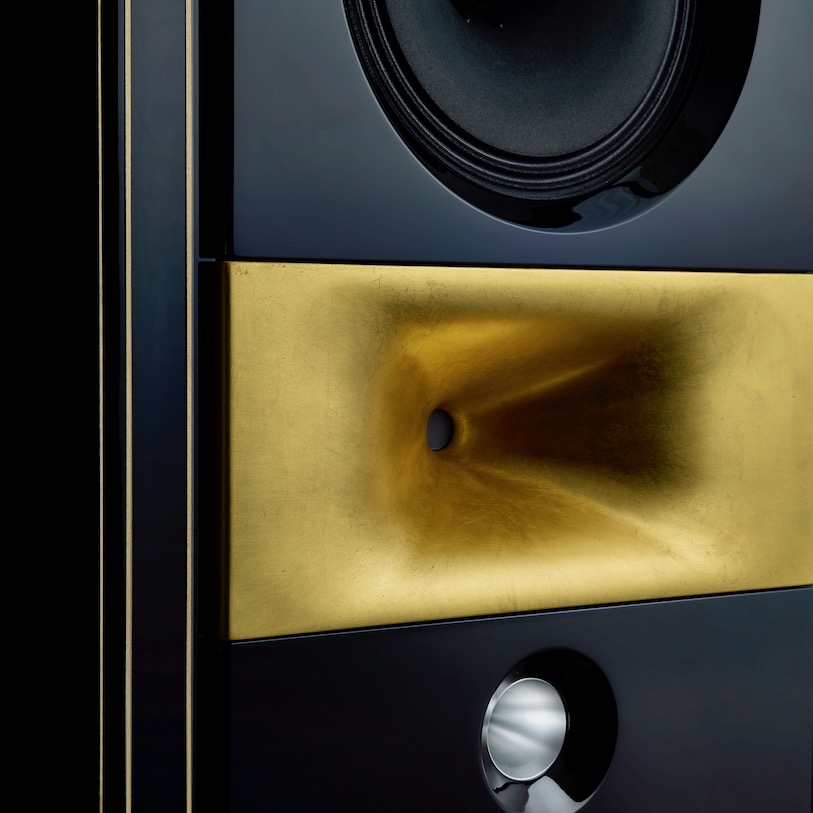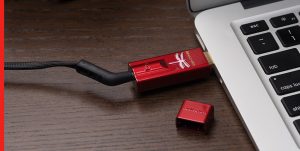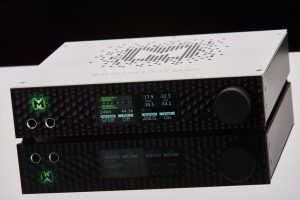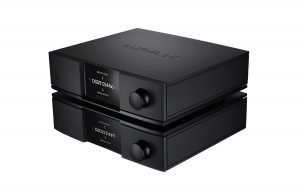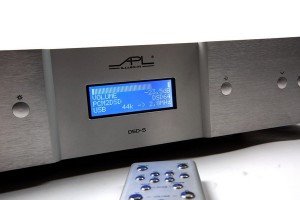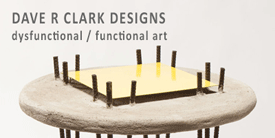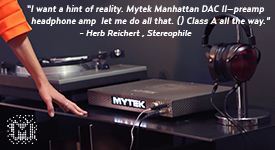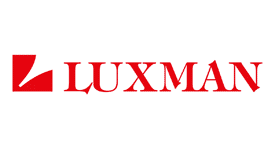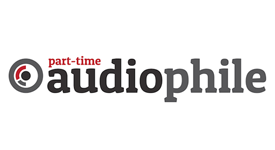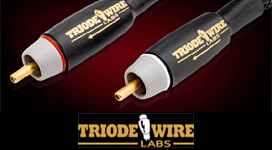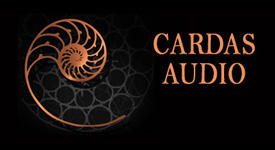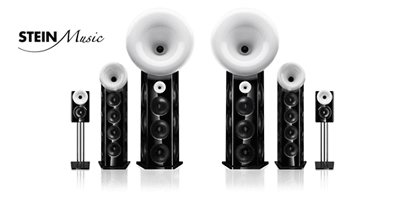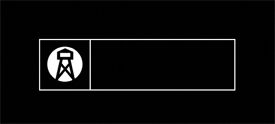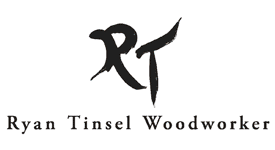My first encounter with the Aries Cerat was back in 2019 at the Munich High-End show. All I really remember was a truly magical experience—even under show conditions (noisy background, people coming in and out). The Aries Cerat system was very natural and analog sounding, surprisingly, I was listening to a digital set-up. Fast forward to the 2023 Munich High-End show where I was able to talk to and get to know Stavros Danos, the mad scientist, designer and founder of Aries Cerat. The system sounded fabulous and, once again, I was listening to the digital set-up. The Taiko Extreme music server and Aries Cerat Ithaka DAC were used as the digital source. It was a complete Aries Cerat system except for the music server and cabling. I said to myself, this is absolutely the most analog sounding system using a digital source at the show. How could streaming sound like listening to vinyl? The following year at the Munich High-End show, once again the Aries Cerat digital set-up sounded as good as an analog system. I had to find out how Danos could make the digital source sound so good. Yes, other big guns, such as DCS, MSB, CH Precision, and Wadax sounded excellent at the show; but the Aries Cerat was different. I still remember vividly what a truly musical experience I had. Listening to "Sergio Leone's Suite: Deborah's Theme" from Once upon a Time in America (Yo-Yo Ma on cello and the maestro Enrico Morricone conducting Orchestra Roma Sinfonietta) was captivating. The sound demonstrated purity in timbre, tone, solidity, weight, and delicacy with a naturalness as if I were listening to live music. It was an engaging and natural listening experience Yo-Yo- Ma was in the room performing! I don't want to get myself in trouble, but I must say I finally found a DAC that rivals analog. It doesn't sound like digital at all. I expressed my great interest to Danos in reviewing the Ithaka DAC and, remarkably, he offered me to send me a DAC for a review; however, he told me it would take some time. I said, I can wait!
Danos contacted me a few months afterward and he told me he would like to send me a new model, the Ithaka Minor DAC, a little brother to the Ianus Ithaka DAC. He said it's a smaller version of the Ianus Ithaka DAC and it's easier to handle and is less expensive (a cool $70,000). It is costly, but Aries Cerat is an ultra high-end audio company where things are done differently and are always sophisticated and elaborate. (They offer entry level as well). The Ithaka Minor differs from its brother in its configuration, power supply, and the number of converter banks. Whereas the Ianus Ithaka DAC uses no less than 24 R2R converters per channel, the Ithaka Minor uses no less than 12 R2R converters per channel in a single-ended mode per channel. It's smaller and lighter than the Ithaka DAC, but still massive and uses the smallest TriodeFet technology.
Robert Neill of Worldwide Wholesales, the US and Canada distributor of Aries Cerat from Ontario Canada arranged the shipment. He told me DHL would deliver the shipment on a pallet, and that it is heavy, close to 300 lbs. This is a DAC, not an amplifier! I would need a second pair of hands. Finally, one sunny weekday DHL arrived. Neill wasn't kidding. It came in two heavy wooden crates and boy, it was heavy. The Ithaka Minor is in no way Minor; it is two big and heavy components. I have yet to see a bigger and heavier DAC. The units are 18.89" x 19.29" x 6.49" and each weighs over 100 lbs. I managed to put the DAC on the top shelf of my audio rack with the help of my neighbor, but had to put the power supply on the floor. It was too big for my rack to accommodate. The quality is top-notch. The chassis is constructed of stainless steel throughout for a more robust build. The heavy solid aluminum sides are used to help dampen the chassis. The thick aluminum side panels are gorgeously sand blasted and are an anodized copper color. The front panel is constructed in a thick blackened glass that displays the inputs being used, and behind it is an aluminum plate. The elegantly crafted removable steel top plate is laser-cut and features the Aries Cerat logo, a lamb horn, and the name "Ithaka."
On the front left top plate of the main DAC there is a classy input rotary selector knob. It has a nice feel to it. When the DAC is turned on, LED lights up on the left front panel showing which input it's on, and to the right it shows the bias level. In the rear of the unit you'll find RCA and XLR inputs and outputs, along with the USB input. At the rear of the power supply, there's an IEC and toggle switch to turn on the unit. The main unit and the power supply are connected with a thick, serious looking umbilical cord.
I opened the DAC top front plate to install the super triode 280 tubes and I was floored by the quality of the parts and the layout of the DAC sections. It looks gorgeous, a work of art. I was told by Danos to leave the top plate screw out so I could fine tune the bias level to my liking. I could bias on the fly.
Stavros Danos is the brain behind Aries Cerat. Aries Cerat makes everything from the source to the speakers except the music server and cables. Danos is a mechanical and aeronautic engineer who specializes in robotics, CNC automation, electronics, and mechatronics. His love of music has led him to pursue the ideal musical nirvana in audio design. After university, he decided to go into the field he loves: Designing audio. He was ahead in his game using his engineering background, his studies and experiments in audio and his acoustic designs. Even before graduating from school, he had designed and built his own reference horn loudspeakers and tube electronics. Aries Cerat was founded fifteen years ago in Cyprus. His goal was to give a new perspective on how true music reproduction should sound. Using his expertise in robotics, CNC automation, and mechatronics he could work with highly specialized high-tech machinery, such as a 5-Axis working station and 3-Axis mini working station. This helped him to experiment and design at a higher level, and Danos' skills and abilities helped him to develop and manufacture his first loudspeakers.
Danos doesn't stay still; he keeps himself busy all the time with new ideas, designing, and experimenting. He loves what he does. I felt his passion in audio when talking to him at the Munich High-End show. He was in his hot zone. He's a happy man. I love talking to him and asking all different types of questions like a dumb little kid, and incredibly, he explains everything to me in detail like a ChatGPT. Of course, I don't really understand half of the time, but it's rewarding to meet a person who is so gifted. He has so much knowledge, I'm truly fascinated by his understanding of audio design. For instance, once he has a new idea, he develops and experiments with it. He told me it's like he puts it in the freezer for future use and he has many of them ready to go.
I have never heard of an Inverted Triode. An Inverted Triode is used on the Aries Cerat's top-line level technology, their flagship DAC, the Homerus. Danos designed the Ianus Ithaka DAC using TriodeFet-output stage technology. Incredibly the TriodeFet presents transfer curves with higher fidelity than the curves of the tube circuit. In the end, TriodeFet technology does not sound like hybrid, tube, or solid-state. It sounds like an ideal tube circuit should sound. (Yes, it sounds like analog). His design goal was to have the Ithaka Minor sonic attributes and strengths as close as possible to its big brother, Ianus Ithaka DAC on a smaller footprint. AC's lab developed the smallest possible TriodeFet-ouput stage technology, Single-Stage, Single-Ended Class-A operation, and its ultra wide-bandwidth is extremely linear. The Ithaka Minor utilizes a smaller TriodeFet (though not small by any means, the main unit DAC weighs 120 lbs and power supply weighs 150 lbs). I thought that digital would be to smaller and lighter, but Danos told me it can't be any simpler.
The R2R ICs are current output devices and their impedance is very high, close to an ideal current source. The current must be converted to voltage and avoids using sonic degrading Opamps or simple resistors. AC uses only custom designed transformers that convert the current differential to a single-ended voltage output. The specially designed transformers are an ideal solution, and second to none in direct comparison to the many alternative I/V methods available. The Ithaka Minor uses different configuration for the I/V transformers, unique D/A range. This was necessary and at same time a nice evolution in its I/V tech, as in contrast to Aries Cerat top models, the converter banks are in Single-Ended mode.
The Ithaka Minor is a ladder DAC. Its ladder DAC uses a resistor network switch by a N number of switches, N being the bit depth. It's passive with no manipulation of the incoming data stream. It has no digital filters and completely avoids the negative sonic aspects created by filtering the common Delta-Sigma or Multi-bit architecture. In Ithaka Minor, an R2R IC- the classic Analogue Devices AD1865N-K, a much-praised chip is used, which Danos believes is the best sounding IC ever made. It uses no less than 12 R2R converters per channel. The AD 1865N-K does not process the data stream in any way, and it's straightforward data handling. According to Danos this gives the freedom to fully exploit the IC in his DACs.
Danos believes the input data is latched and directly refreshes the resistor network, with absolutely no additional complex logic or data handling/processing. He says, "this way we have full control over the resistor network to use it as part of our converter system. Our Super Clock circuit directly re-clocks and drives the "refresh" signal, so absolutely no additional jitter is induced in the conversion." Danos tells me the uses of parallel switched resistor ladder converters aims to cancel the deviation of resistor values down to zero. This improves the linearity and reduces noise on the same principles, along with the dynamic range and channel separation. The paralleling converters improve performance to another level in all aspects.
The Ithaka Minor's PSU architecture is derived from its bigger brother, though it is smaller in size and potential. As in all top model DACs, the Ithaka Minor is powered by its own massive external power supply. It has separate digital and analog circuits like its big brother. The TriodeFet stage is powered by a triple choke filtered, high energy and high current PSU, and utilizes two massive low noise 400VA transformers to power all stages through very low noise Schottsky SIC discrete rectifiers. It uses ultra-high-quality inductors and capacitors to filter out high frequency noise for unmatched noiseless power rails.
Jitter
Danos says "In the Ithaka we use many techniques for lowering and cancelling jitter in both passive and active ways. Bouncing signals, overshoots, low rise times etc greatly increase jitter. We solve this by using special driving circuits and carefully tuned digital line terminations for all digital signals. We use 70 LC filters implemented using RF chokes and high-speed capacitors to decouple digital circuits and ICs form the power rails. These are extremely effective in cancelling out any form of PSU sourced jitter and this solves a very complex problem. Jitter originated in USB and S/PDIF Toslink sources is eliminated right at the 'refresh' signal of the converters.
"Having a C that has no complex data handling logic and no multistage data logic, the precisely timed signal resolves in a extremely accurate jitter free conversion. In our opinion, this is not possible with any other type of converter system."
The Super Clock is also used upstream for re-clocking the XMOS asynchronous USB controller, as well as the S/PDIF receiver. With the internal clock, there is no need for a word clock input.
At last, I was seated in front of my reference system comprising of an Audio Note Kondo Ongaku amplifier powering my new reference Lorenzo Audio Labs LM1 loudspeakers, Taiko Audio Extreme music server, and the impressive sounding EnKlein SHT cables (review in works).
As good as my reference Thrax Audio Maximinus DAC is, the Aries Cerat Ithaka Minor was different. Don't get me wrong the Maximinus sounds extremely good and I have used it as my reference for many years and compared it with other top DACs. But the Ithaka Minor takes me to the other side: "The land of analog." Now that my reference system has moved up the food chain, I need to have a true reference digital regardless of the design or cost that sounds like analog. It's not easy finding one. After all, how can digital rival analog? I enjoy listening to other top DACs, but for me it's Aries Cerat. I've been searching for such a DAC for many years and finally, I found it! Most of the big dogs are heavily marketed, constantly reviewed, on the front covers of audio magazines, and at every audio trade show. Yes, it's needed for business recognition and for branding. However, Aries Cerat doesn't budget heavily in marketing or audio magazines; instead they show-case their products at audio trade shows and that's where I discovered them.
The Aries Cerat Ithaka Minor is music to my ears. But even though most of the big dogs (to name a few, DCS, MSB, CH Precision, and Wadax) sound great, very close to an analog, for me, its "No cigar." Yes, a lot of people will disagree, but that's my honest opinion. Maybe the manufacturers will red flag me, Key Kim, but what I hear is what I hear. Don't get me wrong they sound amazingly good. But when directly compared to a good sounding analog set up with an equally good recording, the sound of the analog is better. Of course, I could live with them all. It's good that the margin is getting narrower, thinner but with Ithaka Minor you're there. It sounds like analog. Ithaka Minor is in the same cloth as the analog. With Ithaka Minor in my system I could go without listening to analog and would not miss it. It is crazy! How could streaming sound this good? Hats off to Stavros Danos. Its timbre, tone, textures, and emotion finally rivals the best vinyl. My point is when I'm listening to Ithaka Minor, I forget digital or analog. I'm just listening to pure music. I can't believe it, Danos did it.
Any system is only good as the first signal it's fed. Of course, all the signals in the chain have to be equally good and you need that synergy to make magic. The Ithaka Minor really let me hear the digital to its full potential and totally enjoy the music. When the music sounds this good listening to streaming, you say to yourself, why bother with analog? I'm not saying it's better than the analog but the convenience alone makes it so appealing. I don't have to get up and change LPs constantly; I can just sit and enjoy the music and also discover new music at the tip of my fingers. It's a modern marvel: Digital finally done right! Don't get me wrong I do enjoy listening to vinyl but now, with the Ithaka Minor, I do it less often. The last time I listened to vinyl must have been a couple of months ago. It took me more than twenty-five years to come to audio nirvana, and now I'm really enjoying it immensely.
Streaming track after track and listening to CD after CD I realized the recordings sound so right, as if I'm listening to vinyl. The Ithaka Minor's magic persisted throughout its range from top to bottom and from the softest ppp to the thunderous ffff. Listening to one of my favorites, the Beethoven Triple Concerto for Piano, Violin, Violincello and Orchestra in C Major. "Triple Concerto" Op. 56, with maestro Daniel Barenboim conduction the West-Eastern Divan Orchestra, and the virtuosos, Anne-Sophie Mutter, Yo-Yo Ma, and Daniel Barenboim, I was amazed that streaming could sound this good. I have heard this beautiful recording many times, streaming and on vinyl, but for the first time the Aries Cerat Ithaka Minor rivals the vinyl. The Ithaka Minor is a magician! It gives emotion, immediacy, presence, and dimensionality with the right timbre and tonality. It's as compelling as if I were listening to a live venue, no etch, sharpness or hardness, and with a great sense of ease with tonal richness and harmonic complexity of the instruments, making the virtuosos performance breathtaking. It was delicate, highly resolved, and rendered music with liveness and fullness with solidity. The Ithaka Minor makes digital music richer, more natural, and precise than any DAC I've experienced in my system and other systems. Don't get me wrong, my reference Thrax Audio Maximinus DAC is a true reference caliber DAC that competes well with other top reference DACs, but the Ithaka Minor is in its own class. The Ithaka Minor makes it difficult to choose which format is best, making it a matter of taste. This was my first experience listening to a truly magnificent masterpiece as I was listening to vinyl but was streaming. How is this possible? Wait a minute, did I lose my mind or just go crazy? No, what I hear is what I heard. The recording sounded just like as if I were listening to my vinyl set-up, Doehmann Audio Helix 1 turntable, and it's not chopped liver. It's a world class turntable. The Ithaka Minor is from a same cloth as the top vinyl set-up. What he does is to music regardless of the format, makes it come to life, legitimizing streaming and justifying the format itself.
Listening to concertos and symphonies was outstandingly rewarding. The Ithaka Minor's affect on my system's spatial performances was superb. I put on the Dvorak's Cello Concerto for Cello and Orchestra in B minor, op. 104 performed by the master, Mstislav Rostropovich, and the maestro, Herbert Von Karajan, conducting Berliner Philharmoniker, and it produced an enormous soundstage with realistic dynamic swings. It rendered a three-dimensional and picturesque staging that was wide and deep. The Ithaka Minor captures the full warmth, sweetness, and complexity of the orchestras dynamic range. Rostropovich took center stage; his virtuosity was rendered exquisitely and emotionally and its portrayal of individual images is brilliant and reveals layers of small detail and nuance, best I have heard. Dimensionality was excellent, I could hear deep into the hall and noticed instruments at the back of the stage just as vividly as those in the front. The LM1 loudspeakers were simply singing.
Ithaka Minor doesn't discriminate against music genre. One weekend I was in the mood for female voices and put on Sarah Vaughan from her extraordinary recording of "Send In The Clowns" from her Send In The Clowns. The Ithaka Minor put me in a hypnotic state. The midrange was reproduced with a great sense of musical realism and emotional involvement. The Ithaka Minor was able to reproduce Vaughan's rich, velvety, and luxurious tone with technically flawless control and across her vocal range with a three-dimensionality that was exceptionally engaging. It has an astonishing ability to transport music in an otherworldly way. I was delighted by the intense level of purity, immediacy, and solidity of her voice. I felt as though she were in the room.
The Ithaka Minor was addictive. I'm so glad I found Aries Cerat Ithaka Minor DAC. It's a revelation, poetry in motion. Hats off to Danos. It is the first DAC to rival vinyl that I know of regardless of the cost. After evaluating for about 10 months, I decided to order one as my new reference DAC. Even better yet, I ordered the bigger brother, the Ianus Ithaka DAC. What you don't know, you don't know. It's music to my ears. Stay tuned, more reviews to come from the Aries Cerat. I hope I won't get myself in trouble!
Aries Cerat Ithaka Minor DAC
Retail: $70,000
US and Canada Distributor
Worldwide Wholesales
+1 519-619-9924
Aries Cerat
+357 99307099

